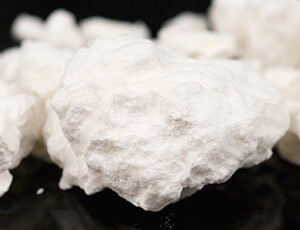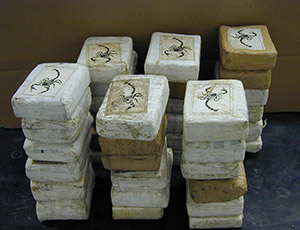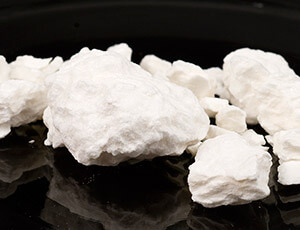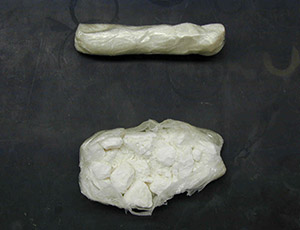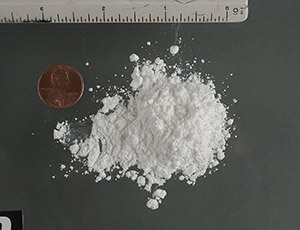- Over-the-Counter Drugs
- Prescription Drugs
Cocaine is classified as a Schedule I Drug by the DEA
- The drug has a high potential for abuse.
- The drug has no currently accepted medical treatment use in the U.S.
- There is a lack of accepted safety for use of the drug under medical supervision.
What is cocaine?
Cocaine is an intense stimulant drug with strong addictive potential. Derived from coca leaves grown in South America, cocaine is usually manufactured in remote jungle labs. Within these labs, the raw product undergoes a series of chemical transformations. Colombia produces about 90% of the cocaine found in the U.S.
Common names are Coca, Coke, Crack, Flake, Snow and Soda Cot.
What does cocaine look like?
Cocaine is a white, crystalline powder often diluted, or cut, with a variety of substances, including sugar and anesthetics. It is cut to stretch the amount of product and increase profits. Cocaine base, also known as crack, looks like small, irregularly-shaped chunks or rocks of a whitish solid.
How is cocaine abused?
The powdered form of cocaine is either snorted or injected. Cocaine is also abused in combination with an opiate (heroin) in a practice known as speedballing.
Crack is a form of cocaine processed to form a rock crystal. It is then smoked, either alone or within marijuana or tobacco. Vapors from the heated crystal are absorbed into the bloodstream through the lungs.
How does cocaine affect a person?
Cocaine is a strong central nervous system stimulant and increases levels of the neurotransmitter dopamine in brain circuits regulating pleasure and movement. The intensity of cocaine’s euphoric effects depends on how quickly the drug reaches the brain. Following smoking or intravenous injection, cocaine reaches the brain in seconds, with a rapid buildup in levels. This results in an intense euphoric effect known as a rush. The euphoria caused by snorting cocaine is less intense and doesn’t occur as quickly. Other effects include increased alertness, excitability, restlessness, irritability and anxiety. Taking high doses of cocaine or prolonged use typically causes paranoia.
The crash following a cocaine binge is characterized by mental/physical exhaustion, sleep and depression lasting several days. Following the crash, users experience a craving to use cocaine again.
Cocaine is a powerfully addictive drug, and tolerance develops rapidly. This makes it difficult for a user to reliably predict or control the extent to which he or she will continue to want or use the drug. The risk for relapse is high for abusers, even following long periods of abstinence.
Methamphetamine causes effects similar to cocaine.
What are the health effects/risks of using cocaine?
Regularly snorting cocaine can lead to loss of smell, frequent nosebleeds, problems swallowing and hoarseness. Users who inject cocaine may experience allergic reactions, either to the drug or to some additive in street cocaine which, in severe cases, can result in death. Many chronic cocaine users also lose their appetite and experience significant weight loss and malnourishment.
People who use cocaine can also suffer heart attacks or strokes, which may cause sudden death. The abuse of highly pure street cocaine can also cause cardiac arrhythmias, ischemic heart conditions and convulsions.


